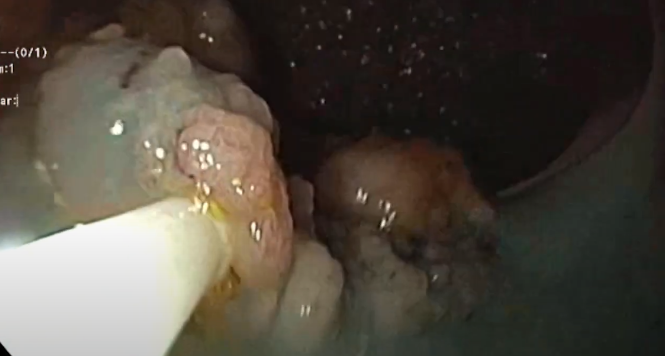Microprocessor-Controlled Endo Cut Versus Forced Coagulation: No Difference in Delayed Hemorrhage
Douglas K. Rex, MD, FASGE, reviewing Pohl H, et al. Gastroenterology 2020 Mar 12.
Previous uncontrolled studies indicated that forced-coagulation (FC) current (the blue pedal) is associated with more delayed hemorrhage after polypectomy (and less immediate hemorrhage), while blended or cutting current (the yellow pedal) causes more immediate and less delayed hemorrhage.
In a multicenter study, 928 nonpedunculated lesions ≥20 mm that underwent endoscopic mucosal resection (EMR) were randomized twice: (1) either clip closure of the EMR defect versus no closure and then (2) snare resection using FC current versus Endo Cut (E) on the 2-1-4 setting (Erbe Elektromedizin GmbH, Tuebingen, Germany). The results from using clip closure were previously published and showed a two-thirds reduction in delayed bleeding from lesions in the right side of the colon. The current report describes outcomes by electrocautery settings.
Overall adverse events were not different with E (7.2%) versus FC (7.9%). Delayed hemorrhage occurred in 5.0% of patients with E versus 5.7% with FC. Perforation occurred in 6 patients with E and 3 with FC (P=.32). Immediate hemorrhage was more likely with E (17% vs 11%; P=.006).
COMMENT
The theory of using more cutting and less coagulation current is that the cutting current causes less coagulation injury of the defect and should be less likely to injure a deep submucosal vessel in a way that would cause bleeding later. These results indicate there is no reduction of delayed bleeding when Endo Cut is compared to forced coagulation and both currents are microprocessor controlled. Microprocessor-controlled currents deliver less current than the maximum set if the machine determines there is less tissue resistance. Delayed hemorrhage might still be more common using forced coagulation delivered by older electrocautery units with fixed outputs.In practice, many experts also reduce the charring of the EMR base by squeezing the tissue very tightly in the snare before applying the cautery. The extent to which study endoscopists used this trick with forced-coagulation current is uncertain.
Note to readers: At the time we reviewed this paper, its publisher noted that it was not in final form and that subsequent changes might be made.

Douglas K. Rex, MD, FASGE
CITATION(S)
Pohl H, Grimm IS, Moyer MT, et al. Effects of blended (yellow) vs forced coagulation (blue) currents on adverse events, complete resection, or polyp recurrence after polypectomy in a large randomized trial. Gastroenterology 2020 Mar 12. (Epub ahead of print) (https://doi.org/10.1053/j.gastro.2020.03.014)


